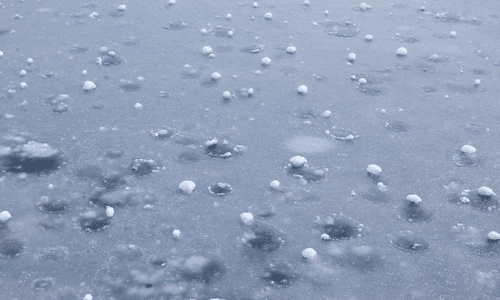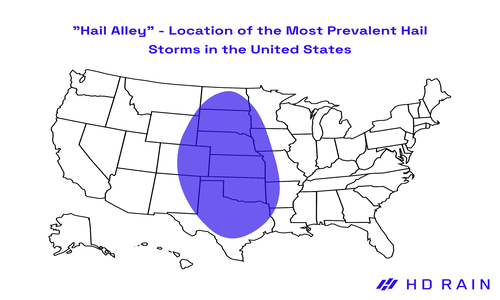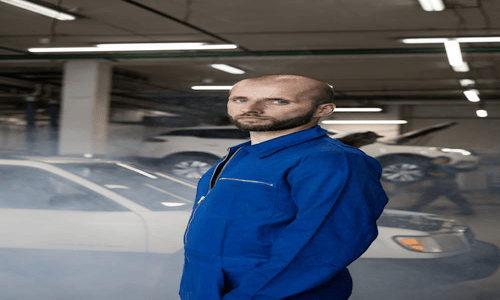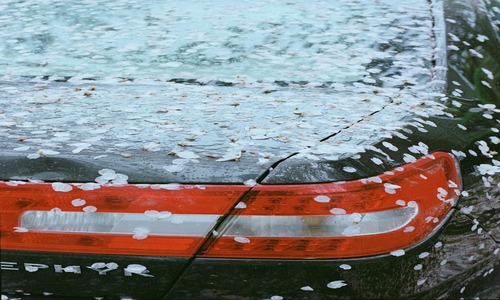Hail in Wichita: Facts Every Car Owner Should Know

Post-Storm Checklist for Hail Damage on Your Car in Killeen
September 24, 2025
Why PDR Is the Go-To for El Paso Vehicle Owners
October 20, 2025Most people assume hail is just hail – ice falling from the sky, causing the same kind of damage, no matter where you live. I mean, how different could the damage really be?
Hail in Wichita, KS, has a character of its own, leaving behind damage that’s anything but ordinary. And car owners in this part of the country know all too well that hail isn’t just a seasonal inconvenience – it’s a recurring threat with significant consequences. From cracked windshields and dented roofs to depreciated vehicle value, the aftermath leaves drivers with more questions than answers.
But why is this region particularly vulnerable to hail, and what can car owners do about it? Let’s discuss some facts every car owner in Wichita should know.
Key Factors Contributing to Wichita’s Hail Storms
Hail doesn’t just happen randomly – it requires a perfect mix of atmospheric conditions. Unfortunately, Wichita sits right in the crosshairs of several weather dynamics that make hailstorms both frequent and severe.
1. Regional Location
Wichita is no stranger to hailstorms – it’s in the heart of Hail Alley. In fact, the Great Plains experiences some of the highest hail frequencies in the country.
Wichita’s geographical position makes it particularly vulnerable to hailstorms, as it often lies right in the path of severe thunderstorm tracks. In fact, the city experiences dozens of hail events annually, with a handful causing catastrophic damage. This recurring pattern has earned Wichita a reputation as one of the most hail-prone cities in the U.S. Needless to say, hail damage repair is a common issue.
2. Atmospheric Instability
One of the most critical factors fueling hailstorms in Wichita, KS, is atmospheric instability. The city is located in a region where warm, moist air from the Gulf of Mexico often collides with cooler, drier air descending from the Rocky Mountains and Canada. When these two contrasting air masses meet, they create ideal conditions for towering cumulonimbus clouds (the massive storm clouds that can produce hail).
Inside these clouds, strong updrafts repeatedly lift supercooled water droplets high into colder air. The droplets freeze, collect more moisture on the way down, and are pushed back up again, layering more ice until they become hailstones heavy enough to fall.
This takes us to the next point.
3. Bigger Size
Not all hail is created equal. Hail reports in Wichita, KS, show that the city frequently experiences some of the most severe hailstorms in the U.S.. While pea-sized hail is common across much of the country, Wichita hail is often larger. That’s because the strength of the updrafts mentioned above allows hailstones to grow, sometimes as big as golf balls or even baseballs, before crashing down.
4. Localized Storm Patterns
Atmospheric instability and severe thunderstorms are usually key ingredients for hail, but urban environments can also have an influence. Reports show that in a recent event in Kansas City, the combined effect of heat buildup over the area and pollution helped to create a more violent storm and amplify the frequency of large hail by nearly 20%.
And the same can be said about Wichita’s urban environment. Large storm systems sometimes weaken or split around a city only to re-intensify in the east. This may be influenced by urban factors, such as the heat dome effect caused by the city’s concrete and infrastructure. The extra heat can destabilize the atmosphere further, intensifying storms as they pass through.
5. Climate Change
Another piece of the puzzle is climate change. Even though hail has always been a part of Wichita’s weather history, scientists suggest that global warming is making storms more volatile. Warmer surface temperatures feed stronger storms, while shifts in jet stream patterns may trap severe weather systems over the Midwest for longer periods.
For Wichita, this means more frequent and intense hailstorms than in decades past. Even small changes in climate can amplify the size and severity of hail.
What Car Owners in Wichita Need to Do

For car owners in Wichita, hail is a given. So, despite all the science and weather patterns behind hail, what really matters to car owners is taking preventative measures before hail strikes.
While you can’t control the weather, you can reduce risk:
- Use covered parking whenever possible. A garage or carport is your best defense.
- Invest in a hail protection cover – special padded covers can minimize dent damage if a storm strikes while you’re parked outside.
- Stay weather-aware. Keep an eye on storm forecasts and severe weather alerts. In Wichita, being prepared is half the battle.
What To Do If Your Car Has Been Damaged By Hail in Wichita, KS
Knowing what to do immediately after hail damage in Wichita, KS, is crucial.
Some car owners wonder if they should repair the damage at all, especially when it seems ‘just cosmetic’.
The truth of the matter is that leaving damage unrepaired can significantly decrease resale value. In Wichita’s hail-prone market, potential buyers are cautious, and a visibly hail-damaged car will likely sell for much less. Getting repairs done preserves both appearance and long-term value.
Here’s a quick guide to help you get started with the repairs.
1. Assess the Damage
After a hailstorm, check your vehicle for dents, chipped paint, or broken glass. Make sure to do this in daylight because some hail dents can be hard to detect in low light. Check the surface from multiple angles. Make sure to photograph the damage as it will be a crucial part of your insurance claims.
2. Contact Your Insurance Company
Comprehensive auto insurance policies typically cover hail damage, but it’s best to contact your provider to confirm the details. Remember, claims must be filed quickly, so don’t delay the process. Widespread storms in hail season often result in backlogged claims.
3. Get a Professional Inspection
Even if the dents look minor, it’s important to consider hail repair in Wichita, KS. If left untreated, hail damage can affect the vehicle’s paint, leading to rust or weakened structures down the line.
A professional body shop or hail repair specialist should inspect your car. Wichita has many that specialize in Paintless Dent Repair (PDR), a cost-effective method for fixing hail dents without repainting.
Over to You
Hail in Wichita, KS, isn’t just another storm. It’s a unique and recurring challenge that car owners face year after year. The city’s geographical location, combined with the other aspects mentioned above, makes it a hotspot for some of the largest and most damaging hailstorms in the country.
For car owners, the takeaway is simple: don’t underestimate hail or the damage it can cause.
So whenever hail strikes, make sure to connect with professional auto hail repair specialists, like Rapid Auto Hail Repair. We have years of experience repairing hail-damaged vehicles. But that’s not all we do. We also help with insurance claims. From assessing the damage to providing estimates and filing claims, we can help you manage it all. Simply give us a call today.





